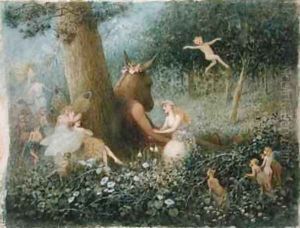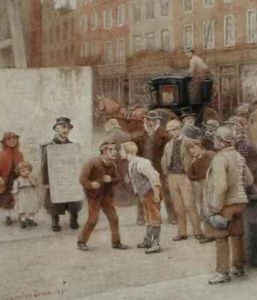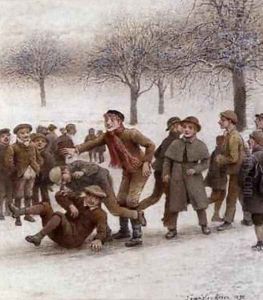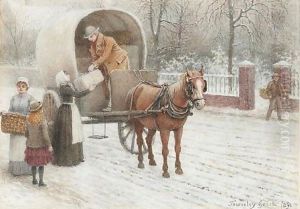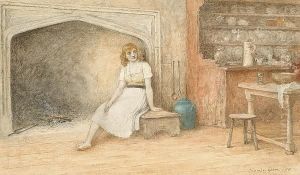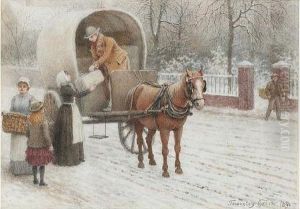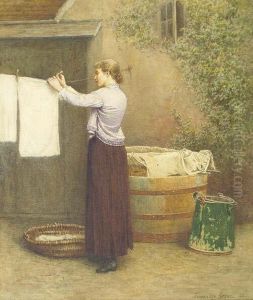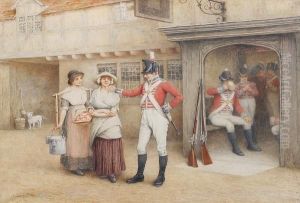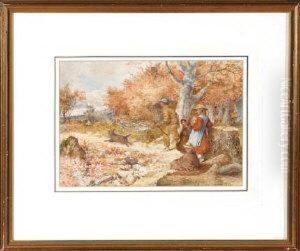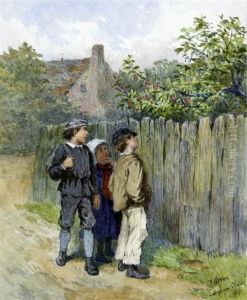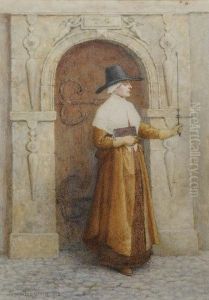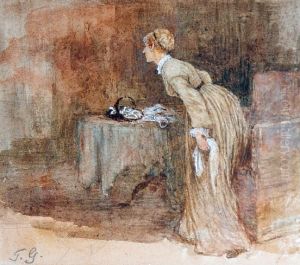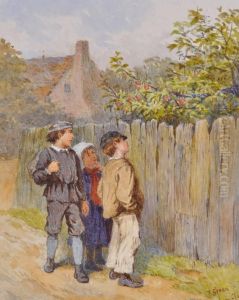Henry Towneley Green Paintings
Henry Towneley Green was an English artist known for his painting and illustration work during the 19th century. Born in 1836, Green's artistic journey began at an early age, influenced by the vibrant cultural milieu of Victorian England. He pursued his passion for art by enrolling at the Royal College of Art, where he honed his skills and developed a distinct style that would later define his career. Green's work is characterized by its detailed depiction of everyday life, as well as its use of color and light to evoke emotion and atmosphere. Throughout his career, Green remained deeply engaged with the art community, contributing to various exhibitions and gaining recognition for his unique approach to painting and illustration.
Green's illustrations often appeared in popular publications of the time, making his work accessible to a broad audience. This exposure helped cement his reputation as a skilled illustrator, capable of capturing the essence of narrative and character with his drawings. Additionally, Green's paintings, which often focused on landscapes and scenes from everyday life, were celebrated for their realism and ability to capture the quintessential English countryside and its inhabitants.
Despite his success, Green's life was not without challenges. The Victorian art world was highly competitive, and Green had to navigate the complexities of artistic trends and public taste. Nevertheless, he remained dedicated to his craft, continuously evolving his technique and exploring new subjects.
Henry Towneley Green's legacy lives on through his contributions to the art world. His works are held in various collections and continue to be studied for their contribution to the visual culture of the Victorian era. Green's dedication to portraying the world around him with authenticity and sensitivity has ensured his place in the annals of British art history. He passed away in 1899, leaving behind a body of work that continues to inspire and captivate audiences.
